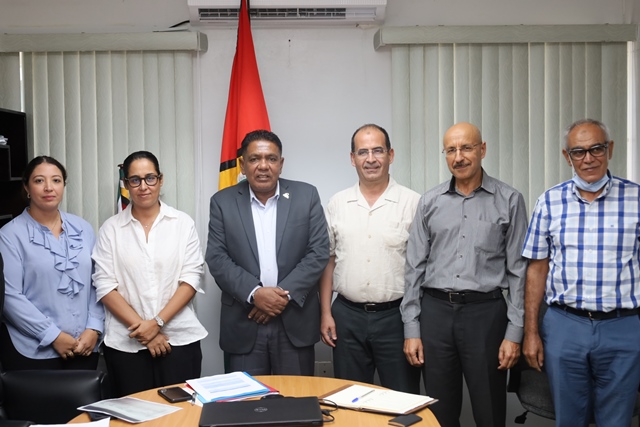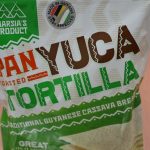A team of scientists from the National Agriculture Research Institute (NRAI) and the Morocco International Cooperation Agency (AMCI) is currently in Guyana to present, explore and assess the impact of the Soil Fertility Map Project.
The project will see the Government of Guyana collaborating with the two institutions to expedite the digitization of soil data which includes soil types, description, crop suitability, and chemical data such as organic carbon.
The project, which was launched in Guyana and Suriname, will involve extensive soil data exploration activities to build an inventory of soil information using local soil datasets.
Earlier today the team paid a courtesy call to Agriculture Minister Zulfikar Mustapha to discuss the scope of the project.
During the meeting, Mr. Rachis Moussadek of the Moroccan National Agriculture Research Institute explained that the project was structured into different components.
“The first component, which is very important, will see us gathering information about the soil and its fertility. This data will be compiled in a digital format that can be used by policymakers. This data will assist farmers with receiving better productivity and efficiency,” he explained.
The project, which will run for four years, will involve the collection of information as well as the development of a methodological framework for reviewing and updating soil data including soil organic carbon, after which, a platform will be developed that can be used by farmers to guide their cultivation.
While speaking on the project, Minister Mustapha said there were thousands of acres of land in Guyana that the government was looking to bring under cultivation and that those areas will need effective soil nutrition.
“In Guyana, we are using approximately 80,000 metric tons of fertilizer annually. With this project, you can visit the areas where we are looking to bring virgin lands under cultivation and determine what inputs are needed to do so. We started the cultivation of corn and soya in the Intermediate Savannah. If we are to increase production we need to have effective soil nutrition in that area. We have thousands of acres of land that are available. We have to make those lands arable so that we can not only plant corn and soya but other crops,” Minister Mustapha said.
Since taking office the government has maintained that technology will play an integral role in the agriculture sector. Minister Mustapha, on several occasions, has said that technology was needed to improve production and expand the sector.
He also said that the use of generated Digital Soil Maps (DSM) for selecting sites where data on the full environmental variability including soil forming factors, latitude, longitude, soil depth, time, and land use history is required.
Minister Mustapha also said that the government was working to strengthen the quality control of the National Agriculture Research and Extension Institute’s (NAREI) Soil Chemical Services Laboratory, through the rehabilitation of physical facilities and instrumentation.
The team is expected to meet with officers from the Guyana Livestock Development Authority (GLDA), the Guyana Rice Development Board (GRDB), the Guyana Sugar Corporation (GuySuCo), and NAREI as well as conduct a series of field tests over the next two days.






